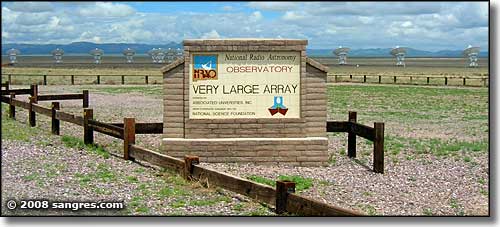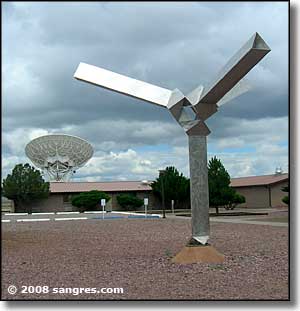
Very Large Array
National Radio Astronomy Observatory


The Very Large Array, a unit of the National Radio Astronomy Observatory, was built on the Plains of San Augustin, the multi-million-year-old remains of a large intermontane lakebed that is surrounded now by volcanic uplifts running in all directions. The Plains of San Augustin were chosen for this project because of the sheer area of very flat terrain available. The mountains surrounding the valley also serve to deflect a lot of man-made interference that would affect the functioning of the equipment in the array.
The main "sensing apparatus" of the Very Large Array is a series of radio "dishes" aimed the sky. The Array consists of a Y-trackbed, each of whose legs is about 13 miles long. On a regular basis, each of the antennas in the array is loaded onto a cart on that track and moved to another location on that antenna's leg. Then the antenna is moved off the cart onto a new pad and bolted down on preset concrete anchors. In turn, each antenna is moved to its new place and bolted down again. Then they are all turned on and recalibrated: to make sure they are all pointed in the same direction and seeing at the correct resolution. Then they go back to their "job," 24/7.
The Administrative Office for the Very Large Array is at New Mexico Technical & Mining Institute in Socorro.


From the balcony on the control building

Along the self-guided tour

